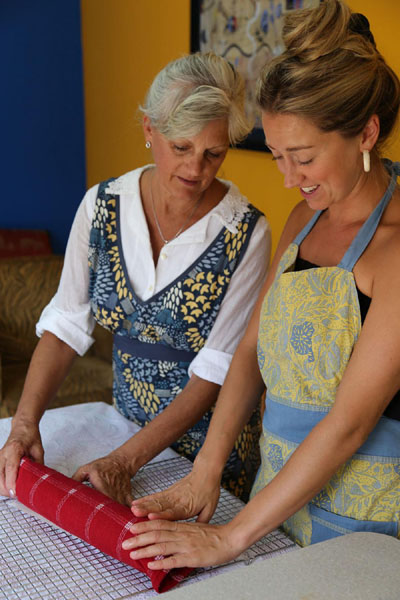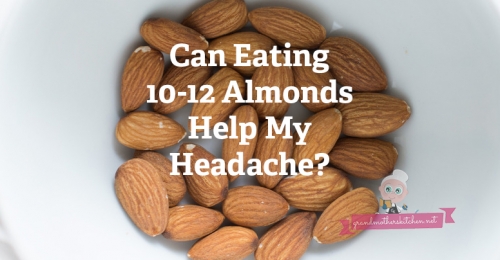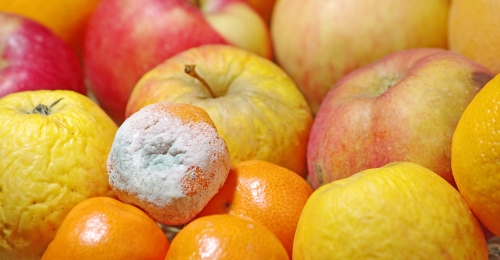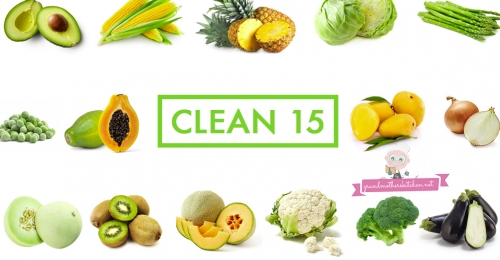How and Why We Quit Drinking Coffee
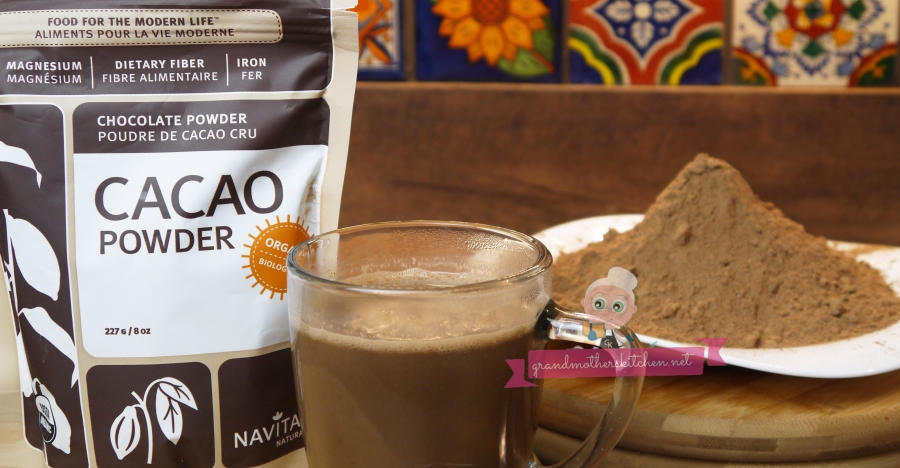
About this Recipe
About The Author: Article written by Heidi Rasmussen, co-founder of Grandmother’s Kitchen, nutritionist (BSc Nutrition & Dietetics), yoga teacher (RYT), writer, and wellness researcher from British Columbia, Canada.
WHY we stopped drinking coffee:
Mom has been drinking coffee every morning - usually about 2-3 cups a day for about 20+ years. It was her morning ritual and the thing that got her out of bed with enthusiasm. Can you relate? After a couple of cups however, she could also be somewhat jittery and living on the more anxious side of life.
When I first finished my degree in nutrition, I became a morning green tea drinker. Then one day, I started to enjoy a sip of coffee here and there, and then eventually became a regular morning coffee drinker for nearly 6 years. I came to love the thick rich warmth of a cup of coffee with the addition of honey and cream. Unfortunately, I found myself feeling jittery, a slight twitch in my left eye was developing, and my stomach would start to churn within a few moments of starting my cup of coffee.
Flash forward to today and Mom and I have both replaced our morning coffees with our new favorite hot beverage which we both agree is even more delicious and a much more calming ‘wake-up’ to our nervous systems. Plus, when you start to read about some of the history and benefits, it becomes easy to make the switch.
Now to be 100% transparent, every so often I will mix my cacao in with some fresh coffee for a mocha, or at a restaurant from time to time may order a cappuccino, and I know for a fact that if I was back in Italy I would order espressos just so I could hang out at the cafe with the locals. In our lives, it is not about being complete purists, but about being in tune with our bodies to what feels truly good and energizing.
How We Stopped Drinking Coffee: Introducing Raw Cacao
While traveling in Central America in 2018 I found that in many cafes I was able to find a warm hot beverage of raw cacao that was absolutely delicious and an amazing alternative to coffee. Unlike coffee I could personally drink it at any time of day without feeling jittery and without it affecting my sleep. I know have learned that cacao and coffee have very different amounts of caffeine, which may have been causing the shaky feelings. Read further for more about caffeine content in chocolate.
Drinking a hot beverage made with raw cacao is quite a bit different than drinking the powdered hot chocolate from my childhood. It is very bitter and not at all sweet on it’s own. However, when mixed with a nice nut or oat milk and some honey or maple syrup - is highly satisfying.
What is the difference between cocoa, chocolate and cacao?
Some basic food knowledge - chocolate is a fruit, and comes from beans that are called cacao beans. The word “cocoa” is often used to talk about “cacao”. Cacao is pronounced ‘ka-cow’, and cocoa is pronounced ‘co-co’. However, Cocoa and Cacao are NOT the same thing.
Both come from the same plant, however, simply said, cocoa and chocolate are byproducts of raw cacao. Cocoa and chocolate are altered by heat, milk, and sugar, they lose many of cacao’s natural benefits. Raw cacao is made when the cocoa beans are unroasted, and cold pressed or dried at a maximum temperature of 50°C. This raw version of the cocao plant retains more of the nutrients, aromas and subtle tastes than the typical cocoa powder we find in the baking aisle.
Where to Get Quality Raw Cacao
We happen to live in the same area as our favorite health food store, the Vitamin Kings so can walk downtown for our favorite raw cacao products.
They have been so kind and if you would like, you can shop online for here for raw cacao products . For a our special discount on any Vitamin King product you can use the COUPON CODE: GRANDMA
Wherever you buy, look for raw cacao in powdered form. You can also buy it as a bar, but it is a bit more work to melt in a double boiler, and then you also would have to heat it, wheras the powder you can just whisk into the hot liquid and drink and possibly keep more of the nutrients intact.
How to Prepare a Hot Cacao Beverage:
1. In a small pot on the stovetop heat your favorite nut milk ( I prefer unsweetened original oat milk and almond milk) to just before boiling.
2. Take the hot liquid off the heating element and whisk in 2 Tablespoons (about 25g) of raw cacao powder, and honey.
3. Since heat can destroy certain enzymes and nutrients, we like to whisk in the cacao OFF the heat.
4. Add honey or maple syrup to taste.
5. Optional - a sprinkle of sea salt, cayenne, cinnamon, or ginger powder.
Curious About Caffeine? Let’s learn a new big (but interesting) word: Methylxanthines:
Methylxanthines are substances found in some plants that seem to have a studied effect on humans.
Evidence suggests many beneficial physiological effects from methylxanthines (like caffeine) in topics such as neurodegenerative diseases, respiratory diseases, diabetes and cancer. There is also evidence to suggest that too much can lead to certain toxicities and negative health concerns when consumed in high quantities(1). The latter is perhaps why there is concern about over doing it with coffee consumption.
The current most commonly known methylxanthine is caffeine. For some perspective, if a coffee plant were divided up by weight into all it’s different substances that make it up, about 0.4 - 2.4% of a coffee plant is the methylxanthine substance called caffeine (2). There are other kind of methylxanthines that occur in plants that are now being discovered, such as theobromine found in chocolate, which can be more potent than the very small amount of caffeine found in chocolate.
Does Chocolate Have Caffeine?
People wonder the amount of caffeine in chocolate compared to coffee, so let’s break it down from a 2016 study analyzing the amount of different methylxanthines in coffee, teas, and chocolate (1).
Espresso (Approx 1/3 cup)
*On average - 140mg of caffeine
*0mg of theobromine and of theophylline
Cocoa Powder (Approx ⅓ cup)
*On average - 0.22–0.31mg of caffeine
*ALSO on average - it has 0.26mg of theobromine and 0-9mg of theophylline
Conclusion: Dark chocolate has approximately 1% the caffeine as the same amount of coffee.
If you are science lover and want more you can read more about methylxanthines in the linked article.
Ingredients
Return to this How and Why We Quit Drinking Coffee article or check out more recipes at Grandmother's Kitchen
Chocolate as Ancient Currency and Sacred Medicine
Cacao has been used in spiritual ceremonies and rituals originating way back to Aztec and Mayan and traditions in Central and South America. Pure cacao has been used ceremonially for inner awakening, creative guidance, heart opening and inner healing. Intentions are set and once the cacao is consumed spiritually euphoric states are opened, negative energy is dissipated and we are meant to be able to connect deeper and more fully to our loving selves.
The Mayan and Aztec people even used chocolate as currency. "As a result of this monetization, cacao and textiles could be used to finance more state activities and household needs." (3)
Chocolate as a Modern Human Benefits:
There are so many benefits that I could chat about here, but may just save that for another article. So, to narrow it down here is a recent conclusion from a 2018 study which basically says that eating 2 grams of 70% plus chocolate daily may just improve our health! Gotta love that. References below for the fellow science and research lovers out there.
A 2018 study in peer reviewed journal, Molecule, showed improvement in health markers after six months of daily intake of 2 g of dark chocolate with a 70% of cocoa. Cocoa is rich in flavonoids, which in a recent study appears to prevent DNA damage and improve the integrity of the nucleus of the cells. The reason for this may be because of the antioxidants in dark chocolate that decreases cell stress. In this particular study, other health improvements that were observed were improvements in total cholesterol, triglyceride levels and LDL-cholesterol in the blood, and waist circumference. (4)
Some of our Favorite No Bake Recipes Using Raw Cacao:
Peanut Butter Balls Dipped in Dark Chocolate
No Bake Chocolate Peanut Butter Bars
In Conclusions
If you, like us, want a super easy and beneficial way to replace your coffee habit with something that still kicks up your energy but has a more balancing and possibly incredibly beneficial to your health, then you may like the raw cacao option for your new morning ritual. Try starting off slowly, by making a mocha with raw cacao rather than a full cup of coffee, or by replacing your afternoon coffee with a hot cacao beverage instead.
References: (1) João P. Monteiro,1 Marco G. Alves,2 Pedro F. Oliveira, et al. Structure-Bioactivity Relationships of Methylxanthines: Trying to Make Sense of All the Promises and the Drawbacks. Molecules. 2016 Aug; 21(8): 974. Read more.
(2)Mazzafera P., Carvalho A. Breeding for low seed caffeine content of coffee (Coffea L.) by interspecific hybridization. Euphytica. 1991;59:55–60. Read more.
(3)Making money in Mesoamerica: Currency production and procurement in the Classic Maya financial system. Joanne P. Baron (First published: 10 May 2018) Economic Anthropology. Read more.
(4)Leyva-Soto A1, Chavez-Santoscoy RA2, Lara-Jacobo LR3, Chavez-Santoscoy AV4, Gonzalez-Cobian LN5. Daily Consumption of Chocolate Rich in Flavonoids Decreases Cellular Genotoxicity and Improves Biochemical Parameters of Lipid and Glucose Metabolism. Molecules. 2018 Sep 1;23(9). Read more.

